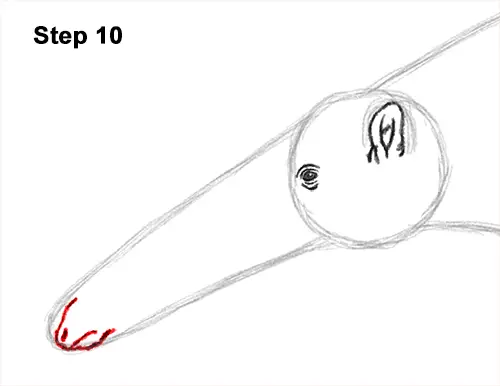
Step 10: Use the tip of the initial long, thin arc as a guide to draw the anteater's small muzzle. Anteaters have small mouths, so just draw a short, curved line near the bottom of the arc for it. Add a tiny line above the mouth for the nostril.
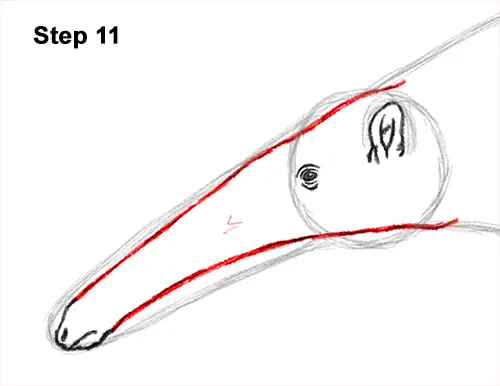
Step 11: Use the initial arc and circle as guides to draw the rest of the anteater's head. Follow the basic path of the arc but make the shape of the head thinner as you darken the lines. The shape of the head should also curve slightly.
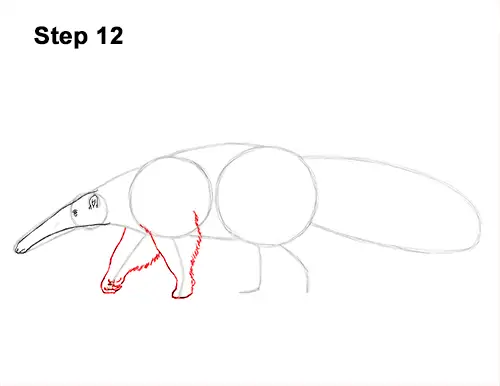
Step 12: Use the lines under the body on the left side as guides to draw the anteater's front legs. Lightly sketch the shape of the leg as you follow the path of the guide. The top part of the leg should be wide. When you get the shape right, darken the lines. Use quick, short strokes on the right side of the leg to represent fur. The toes at the bottom are folded inward (anteaters, like some apes, walk on their knuckles), so they won't be visible.
Use the line on the left as a guide to draw the anteater's front leg on the other side the same way. Sketch the shape of the leg lightly as you follow the path of the guide and only darken the lines when you get the structure right. Use a series of short, curved lines that end in points for the folded toes and claws. Not all the toes will be visible, so only draw a couple of them. Use the image above as reference for how to draw the folded toes.
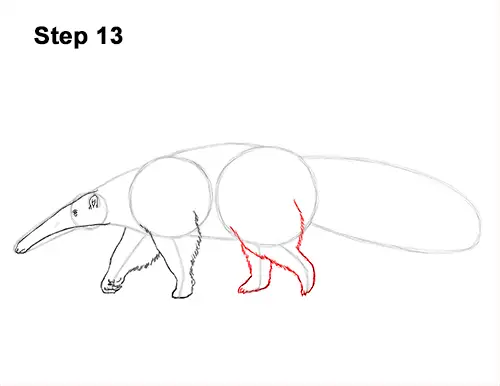
Step 13: Now use the lines on the right side as guides to draw the hind legs the same way as the front legs. Sketch the shape of the leg lightly as you follow the guide and darken the lines when you have the structure right. Use quick, short strokes as you draw the outer shape of the leg to represent the fur. The top part of the anteater's leg should be a lot thicker that the bottom. The anteater is stepping forward, so the leg should kick back. Draw the visible portion of the hind leg on the other side. Unlike the front feet, the hind feet should be flat on the ground.
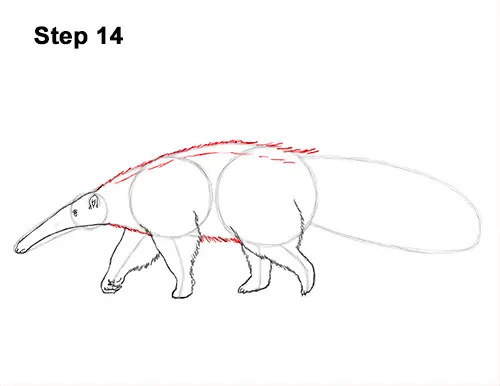
Step 14: Draw the anteater's body by following the basic path of the initial guides and using quick, short strokes for the long fur. Giant anteaters have a stiff, bristly mane across their backs. You can use longer strokes for a longer mane. You can use longer strokes under the body too for a shaggier coat.







